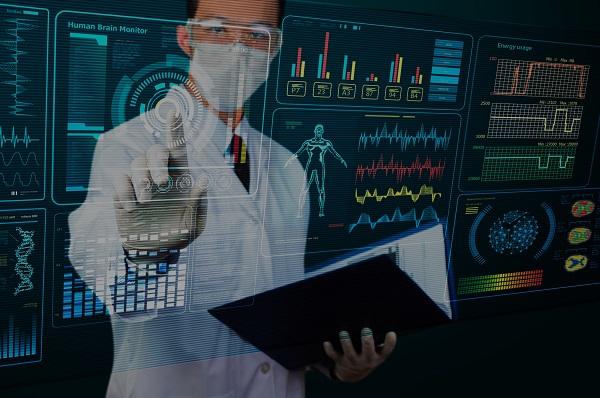Using deep learning, medical researchers today can learn and experiment more about how diseases can manifest in the human body. In this article, we will talk about 3 contributions of Deep Learning to medical research.
A New Dimension Comes to Medical Research with Deep Learning
A biomarker is a signal that can help medical researchers understand the underlying disease mechanisms and the biological responses that lead to certain disorders.
Understandably, biomarker identification has direct benefits for early detection and external interventions. When it comes to neurological disorders, brain imaging techniques such as magnetic resonance imaging (MRI), positron emission tomography, and computed tomography scans are often used to identify underlying disease phenotypes that indicate the presence of Alzheimer's disease or brain cancer.
By examining and understanding neuroimaging results, the researchers reported that they began applying deep learning, which increasingly consists of a subset of advanced machine learning techniques and artificial intelligence, to the task of biomarker identification.
Deep learning has a significant advantage over traditional machine learning and statistical methods. It is not based on handcrafted datasets that are themselves subject to human limitations (time, resources, and research bias). Instead, Deep learning leverages insights from raw data processing with minimal human intervention. Using this information can help create biomarkers that better predict and classify diseased patients from healthy subjects. It can also reveal unknown, potentially useful information for medical research.
Deep learning has been important for biomarker discovery as well as creating tools that can predict and classify diseased patients from healthy subjects. It has potentially revealed some insights that were not possible or unknown before, that are useful for medical research. Here are three leading examples of how deep learning is supporting promising new research in biomarker discovery.
Imaging the Brain
Neuroimaging biomarkers are measurements derived from imaging that can tell us about the degree of severity or likelihood of a particular disease. For example, biomarkers for Alzheimer's disease that can be measured by MRI include hippocampal volume and entorhinal cortical thickness. Because the DL allowed us to use raw data with minimal domain knowledge, multiple research studies were able to identify additional candidate neuroimaging biomarkers for Alzheimer's disease as well as other brain diseases such as Parkinson's disease, autism, schizophrenia, and severe depression. The research path has been particularly promising for identifying candidate neuroimaging biomarkers for other little-known brain disorders.
Because these studies are purely data-driven, they open up the possibility of discovering many new biomarkers previously unknown to medical professionals. Researchers at Arizona State University and the Mayo Clinic in Arizona continue to work to identify such neuroimaging biomarkers for Post Traumatic Headache. The results are seen not only overlap with the existing literature but also point to some more interesting discoveries to be explored from pure data-driven insights. Results will be published in early 2022.
Molecular Signatures
It is relevant to cancer research in the study of molecular biomarkers. The aim is to learn more about the underlying causes of tumor mutations in brain, prostate, and lung cancers. Deep learning has allowed researchers to understand these molecular signatures, or biomarkers linked to morphological patterns, using histological data. Its main focus is to predict complex changes in gene expressions related to mutations. It was effective in finding patterns in nonlinear data.
Deep Learning: Combined Data Sources
Using only one data modality – that is, only neuroimaging or only clinical data – often leads to inconclusive results. It is difficult to understand complex and heterogeneous disease phenotypes with small datasets. That's why researchers are focusing on developing "multi-modal" deep learning approaches that can combine multiple data points to train the model. In the case of Alzheimer's disease, researchers have demonstrated that cerebrospinal fluid, positron emission tomography, clinical and neuropsychological assessments can be used in conjunction with other biomarkers, as well as deep learning techniques, to improve biomarker discovery. However, significant challenges remain in collecting such large-scale multimodal data and the deep learning techniques that can make the most of it.
Biomarker discovery using data-driven techniques is a rapidly growing area of research, with new approaches proposed based on problem definition and dataset usability. Despite progress, challenges remain that need to be addressed. Medical datasets are often adequately collected by only a few organizations and are not made publicly available due to privacy concerns. Therefore, access to this data and research on it remains internal to only a limited number of teams. As well, publicly available datasets are available, but the quantities are limited to truly train a model that outperforms standard benchmarks. Still, a few institutions are slowly trying to fill this gap. It is being made to help independent researchers and graduate students discover new ideas. Therefore, regulations and standards are sought to validate these results using expert knowledge and consistent measures.





No comments yet for this news, be the first one!...